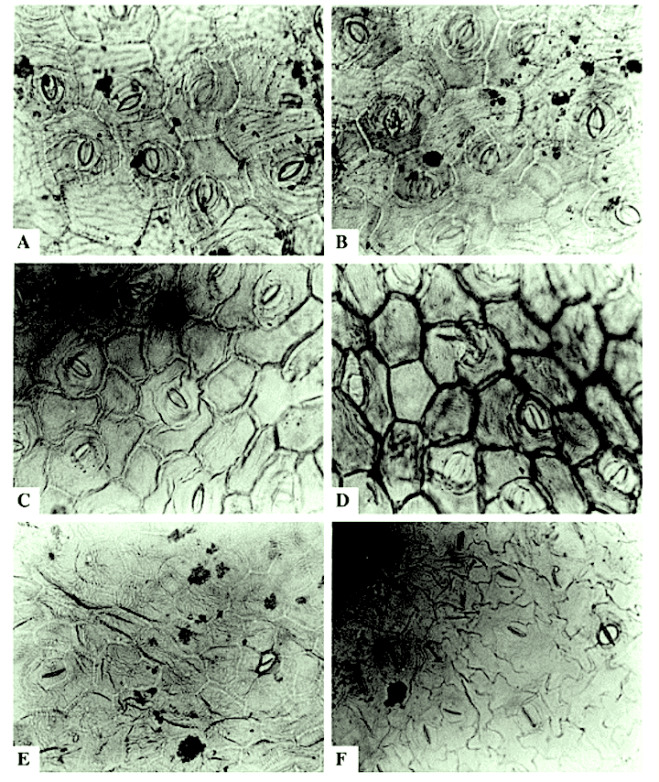Photo credit: Google
Polygonum plebeium (Small knotweed)
The family Polygonaceae in West Africa: Taxonomic significance of leaf epidermal characters.
by Ayodele A.E., Olowokudejo J. D. (2006)


in South African J. Bot., 72: 442–459 – DOI: 10.1016/j.sajb.2005.12.009 –
http://www.sciencedirect.com/science/article/pii/S0254629906000342

Abstract
Comparative studies have been carried out on the leaf epidermal features of the species in the family Polygonaceae in West Africa.
Epidermal cells are mainly isodiametric in Symmeria paniculata, irregular or more often polygonal with curved, straight and undulate to sinuate anticlinal walls.
A few species e.g. Polygonum plebeium, Oxygonum sinuatum, Persicaria nepalensis and Harpagocarpus snowdenii have striations on their epidermal walls.
All species except Afrobrunnichia erecta and H. snowdenii are amphistomatic and the family is characterized by a wide range of stomata types such as the anisocytic in P. plebeium, cyclocytic in S. paniculata and a few Persicaria, anomocytic, diacytic, parallelocytic and paracytic which is regarded as the basic type for the family based on its widest occurrence among the species. However, different stomata types may occur on the same leaf surface.
The unicellular, or multicellular, uniseriate aggregated trichomes are significant in the recognition of taxa in the Persicaria except in P. senegalensis forma albotomentosa which has short uniseriate flagelliform trichomes.
The significance of these observations is discussed in relation to the taxonomy of the family.
